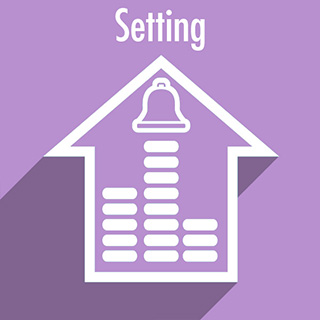What types of accommodations are commonly used for students with disabilities?
Page 7: Setting Accommodations
 In general, instructional or testing environments should be well lit with a comfortable temperature, good ventilation, and minimal extraneous noise or other interruptions. Even under ideal conditions, however, some aspects of the environment or setting might present barriers for certain students. These students might benefit from setting accommodations, which allow for a change in the environment or in how the environment is structured. They provide support that allows students with disabilities to access the same instructional opportunities as students without disabilities; however, keep in mind that setting accommodations:
In general, instructional or testing environments should be well lit with a comfortable temperature, good ventilation, and minimal extraneous noise or other interruptions. Even under ideal conditions, however, some aspects of the environment or setting might present barriers for certain students. These students might benefit from setting accommodations, which allow for a change in the environment or in how the environment is structured. They provide support that allows students with disabilities to access the same instructional opportunities as students without disabilities; however, keep in mind that setting accommodations:
- Do not change the expectations for learning
- Do not reduce the requirements of the task
- Do not change what the student is required to learn
The table below offers examples, though not an exhaustive list, of setting accommodations that address common barriers or challenges students experience when they access or demonstrate learning.
| Setting Accommodations | |
| Common Barrier | Example Accommodations |
| Staying focused or maintaining attention |
|
| Regulating behavior (e.g., is disruptive, distracts other students) |
|
| Seeing text or illustrations (e.g., too far from whiteboard, glare from windows) |
|
| Hearing information |
|
| Physically accessing resources or needed equipment/assistive technology |
|
| Organization of materials |
|
Following are examples of setting accommodations teachers can use to help students access or demonstrate learning.

Kaden
Age: 10
Disability: attention deficit hyperactivity disorder (ADHD)
When assigned independent work, Kaden is often distracted by noise and movement within the classroom. To address this challenge, his teacher gives him a collapsible study carrel (e.g., a cardboard tri-fold) to put on his desk during independent seatwork.

Rae
Age: 15
Disability: learning disability (LD)
Rae struggles to organize her instructional materials. The special education teacher helps Rae color-code her binders to help organize necessary materials (e.g., notes, class assignments) for each class.

Cierra
Age: 6
Disability: autism spectrum disorder (ASD)
Cierra is highly sensitive to noise. The teacher gives her a set of noise-reducing headphones during independent seatwork to help her focus on her assignments.
Setting Accommodations in Action
 Ms. Harbison is a kindergarten teacher. One of her students, Emma, has difficulty paying attention and staying focused in the classroom. She is easily distracted by other students and the activities around her. Ms. Harbison describes Emma as always on the go and needing to move constantly.
Ms. Harbison is a kindergarten teacher. One of her students, Emma, has difficulty paying attention and staying focused in the classroom. She is easily distracted by other students and the activities around her. Ms. Harbison describes Emma as always on the go and needing to move constantly.
Listen as Ms. Harbison discusses some setting accommodations she has provided in her classroom to help Emma be more successful in participating in learning activities and in completing her work in a timely manner (time: 2:03).

Claire Harbison
Kindergarten Teacher
Nashville, TN
Transcript: Claire Harbison
Emma has sensory processing disorder. She is very hyperactive in the classroom and has a hard time regulating her behaviors, has a hard time controlling her body and where it is in relation to other students. So that poses a challenge in the classroom.
She has a table by herself where she can get her work done. That way, she’s not distracted by other students, by what they’re doing or what they’re not doing. She can just focus on her work. When we’re sitting on the rug, she is sitting really close to me, or any teacher. I can reach out a hand to put on her shoulder to remind her to sit on her bottom or give her a gentle touch to remind her to put her hands in her lap.
She has a tent that we use at quiet time. She just goes and pops out her little tent, and it’s a small, confined space where she’s free to do whatever she would like to as long as she’s quiet. That way, she’s not distracted by other students, and they are not distracted by her moving around in her own little space, which she enjoys. She has a study carrel, a little box that folds out that sits at her desk while she’s doing her work, again a way to cut down on the distractions. At the beginning of the year, she was able to sit for three minutes, tops. Now she’s sitting for ten to fifteen minutes. She’s able to sit. She’s able to get her work done. Her work is a lot neater. Her focus has improved. She’s able to close herself off from the distractions of kindergarten around her. Her schoolwork has definitely improved. She really has come a long way with these accommodations. I think it’s made me a better teacher because now I’m more in tune with all my other students’ needs.